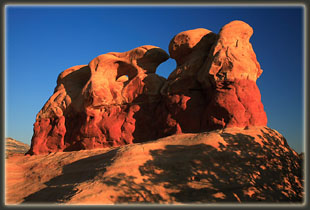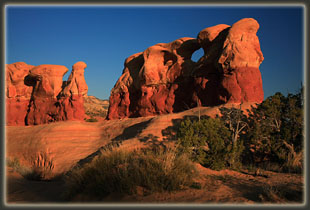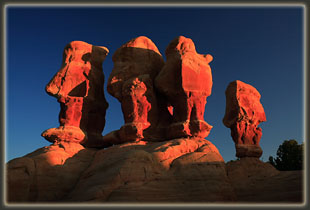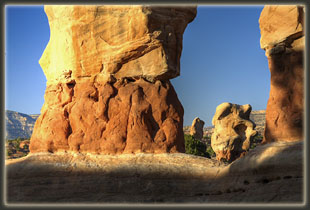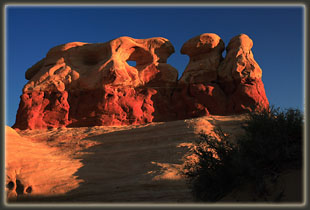| Location:
Grand Staircase-Escalante National Monument, southeast of Escalante, Utah
Map: USGS 1:24K Quad Seep Flat or Trails Illustrated 1:70,500K Canyons of the Escalante #710 Access: From Escalante, take Hwy 12 southeast 5 miles, then turn onto the Hole in the Rock Rd and drive 12 miles. Watch for the signs and turn right at Devilís Garden. The mile marker system on the Hole in the Rock Rd is screwy, so use your odometer to gauge distance. Fees: None for now Trail: Very short, more of a stroll. Trailhead: UTM NAD83 zone 12 463384e 4159908n 5290í Weather: Current and recent conditions Local Forecast April 22, 2008
Arriving at Hole in the Rock Road, I turned the wheel on my Subaru left and drove1.6 miles down the road towards Lake Powell before turning off south into a small lot at Devilís Garden. It seems there is no end to those who like to name things after the Devil, or a Devil. I believe the citizens of these United States are probably more thoroughly represented by geological features named after a devil than by the 435 members of the House of Representatives. And what does it mean, Devilís Garden? Do the shapes look like devils? To me they donít look very sinister, and come to think on it, they donít look anything like what I would guess any devil might look like. Names, names, names. We need them, but get too hung up on them. I stepped out of the car, pulled on my fleece gloves and extracted my burning-cold tripod and camera from the back. The sun was not yet up, but it was plenty light enough to see all around a landscape of hoodoos and sculpted fins of colored, layered sandstone. There were rough trails in the deep sand, but the area wasnít very large and didnít require much walking at all to get to all the formations. I walked around the place with my tripod clamped under my arm so I wouldnít have to hold it with my hands. I snapped photographs here and there, examining with interest the tracks of animals in the soft sand: rabbits, lizards, mice, others unidentified. A nice experiment would be to put a video camera on 1 square meter of desert overnight, then watch it at 4x speed and count all the critters that come into view. The sun lit up the Kaiparowits Plateau to the west, and the snow patches left in gullies and cracks glowed orange in the edgy dawn light. Slowly the demarcation between sun and shadow worked its way lower and lower on the opposing canyon wall just as my feet seemed to grow colder and colder waiting. Finally, the orange light touched the top of the tallest hoodoos and I began to walk around and take more photographs as the light began to flood the small area of rocks with a brilliant yellow glow. Not a sound could be heard, not a breath stirred. The moon hung like a dewdrop on a spiderís web in the west, sinking fast. I took more pictures, looked back, and the moon was gone. My hands ached from holding the tripodís cold aluminum, even through my fleece gloves it was painful to touch. Though the sun helped, I was still very cold. If I had slept indoors the previous night, and taken a nice hot shower that morning, and perhaps headed out with a steaming cup of coffee, I would probably not have found the conditions so chilly, but as it was, I was chilled to the bone. I found an arch (or did the arch find me?), but the sun was on the wrong side for a photo, so I simply admired it and tucked it away in my head for later. It will be a sad life indeed if I never again find myself on the Hole in the Rock Road. Cottontails scattered before me as I continued my stroll through the area. After an hour spent admiring the formations and snapping photos, I decided to hit the road and return to the city, home and reluctant employment. 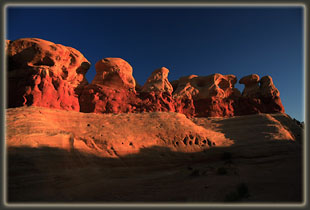 |


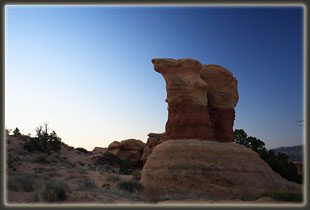
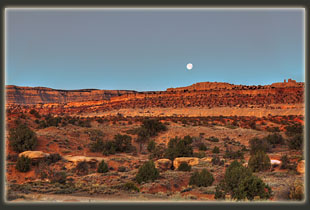
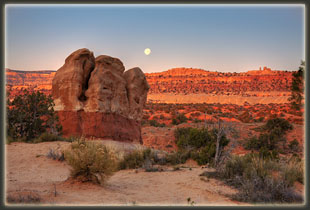

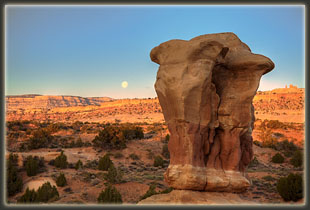
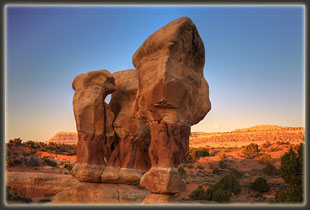



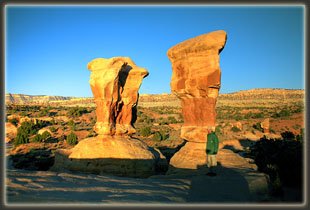
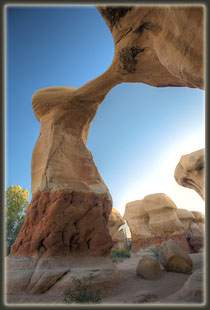
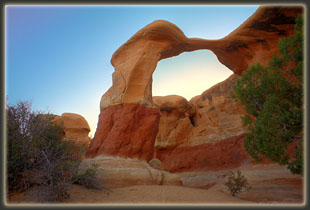
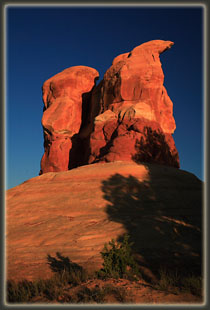 |
